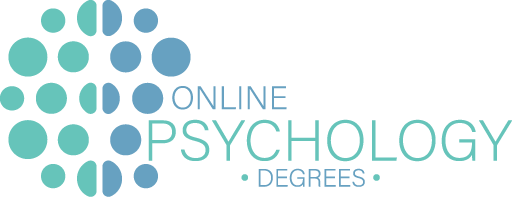
Posted September 2019 by M.S. Broudy, B.A. English, B.A. Psychology; M.A. Social Psychology; Ph.D. Psychology; 10 updates since. Reading time: 7 min. Reading level: Grade 9+. Questions on workplace psychology? Email Toni at: editor@online-psychology-degrees.org.
A successful workplace requires two key features: efficient performance and employee satisfaction. You need to have enough production to keep your business financially solvent and you need to create an environment that will help you retain your greatest resource, the employees. Using psychology principles derived from industrial/organizational (I/O) and positive psychology, you can create both an effective and inviting work culture.
I/O Psychology
Industrial/Organizational or I/O psychology is the study of human behavior in the workplace. Its focus is on assessing workplace structure and personnel to help create solutions to address two key areas: 1) improving the well-being of employees and 2) increasing the production of the organization. The following areas of focus are based on I/O psychology principles:
Recruiting
The first step in creating a successful workplace is recruiting the right people. Not only do workers require the necessary skills, but they also need to be a good personality fit for your culture. Assessment measures, such as the DiSC and Myer-Briggs, evaluates employees’ strengths and weaknesses and their compatibility within a team.
Training
Not every employee knows everything they need to succeed. Training helps fill in the gaps of knowledge and enables you to gain mastery and confidence in a particular area. Along with peer and supervisor feedback, this allows you to achieve a level of competence necessary for effective performance and engagement in the job. Mentoring may be an important aspect of training. When an employee is assigned a mentor it provides them with a source of knowledge, support, and social networking. In addition, it shows them that a company is invested in its development.
Extended Breaks
The five-minute break is a remnant of the past. Current research has found that the most productive workers take 17 minutes of break time per hour. If you are doing the math, that means you are only working 43 minutes per hour. You might be wondering how working only three-quarters of the time can increase your productivity? It is because the time you are working is being used most efficiently. Humans were not built to consistently focus over long periods of time. Breaks allow the mind to recharge and help people to concentrate efficiently during the time they are working.
Supervisor Feedback
When it comes to employee engagement, there is nothing more important than the relationship between employee and supervisor. Feedback takes many forms, from annual performance evaluations to informal comments made on a more frequent basis. Feedback loops are an important concept in I/O psychology. Without feedback, an employee does not know in which areas they need to concentrate and improve. Additionally, supervisors need an honest assessment from their staff as to how the business is running. The quality of the feedback is important as well; management must be aware of how they address employees. Being overly critical and/or punitive causes personnel to shut down, rather than provide supervisors with the necessary information for a business to thrive. Further, intimidation tactics do not work; workers need to be treated with empathy and understanding. It is critical that employees feel like they are part of the team, not just one of the supervisors’ minions.
The Hawthorne Effect
Related to supervisor feedback is the Hawthorne effect. This psychological phenomenon says that employees are more productive when supervisors, co-workers, and customers pay closer attention to what they are doing. Working closely together in a team environment will foster this dynamic, especially compared to a workplace where employees feel isolated and unsupported.
The Principle of Reciprocity
We live in a world where it is rare to receive something for nothing. This also applies to the workplace. Employees are not going to perform at an optimal level if they feel they are not receiving anything in return. They are more likely to give a good effort if they feel like they are being appreciated by management. Rewards can take the form of pay raises, bonuses, and praise.
Positive Psychology
The theory behind positive psychology is that happier employees are more engaged, highly motivated, and create an overall more inviting workplace. Companies that practice positive psychology report higher levels of productivity, less employee turnover, and a decrease in sick time. The following are positive psychology concepts used in the workplace. Please note that there is often considerable overlap between I/O psychology and positive psychology theory; this is not surprising when you consider they share the same goals.
Build Connection
If you want employees to be engaged, it is essential to create a sense of connection within a workplace. In one survey, 40 percent of respondents named their co-workers as the primary reason they enjoy their work. In addition, over two-thirds of respondents reported that positive relationships with colleagues increased their productivity and helped them cope with stress. Although feeling connected can happen organically, upper management can provide their employees opportunities to create a sense of interdependence at work and cultivate social relationships outside the workplace.
Recognition Matters
Employees are highly motivated by recognition and praise. It has been shown that recognition matters more than money or other external reinforcers. Supervisors must show gratitude regularly. Recognition can also extend to co-workers. Supervisors can allow employees the opportunity to show gratitude to their colleagues for something positive they did in the workplace. This can be done, for example, during team meetings or through electronic communications.
Health and Wellness
It is not uncommon for companies to promote physical activity and mindfulness within the workplace. They may give incentives for exercising and some even offer classes such as yoga and meditation. Encouraging wellness has multiple benefits: it is stress-reducer, it enhances mood, and it decreases illness. Other ways that companies can show they care about employees’ wellness include mental health days and allowing them to telework. Companies who offer these perks tend to rate higher in employee satisfaction. By embracing workers’ lifestyle needs, companies show they value a work-life balance.
Increase Ownership
For employees to feel invested and engaged at work, they must possess a level of ownership over what they are doing. Supervisors that encourage creativity and allow staff to promote their ideas will feel help their personnel feel more empowered. Setting goals that play to workers’ strengths will increase their feelings of accomplishment and keep them motivated on their tasks. Further, fostering an environment where employees feel free to expand upon their goals often results in them performing beyond expectations. When a person feels ownership over their activities, it gives them a sense of meaning in their work.
PERMA
PERMA was developed by Martin Seligman, the father of positive psychology, and is easily applied to the workplace. It stands for Positive emotions, Engagement, Relationships, Meaning, and Accomplishment. It focuses on using those five concepts in order to increase happiness at work. For example, a company that focuses on instilling Meaning attempts to help their employees understand the reasons why they chose their particular job and continue to show up day after day. Finding meaning in your work will help increase your level of satisfaction in your chosen profession.
The understanding of successful workplace culture has evolved significantly over the past 25 years. Intimidation and insensitivity have been replaced by recognition and wellness. The concepts introduced by I/O and positive psychology have revamped the work environment and led to happier employees as well as increased productivity.
More Articles of Interest:
- Important Terms to Know in the Psychology Classroom
- What are the Most Helpful Psychology Certifications for Resumes?
- 5 Learning Theories in Psychology
- 10 Most Important People in the History of Psychology
